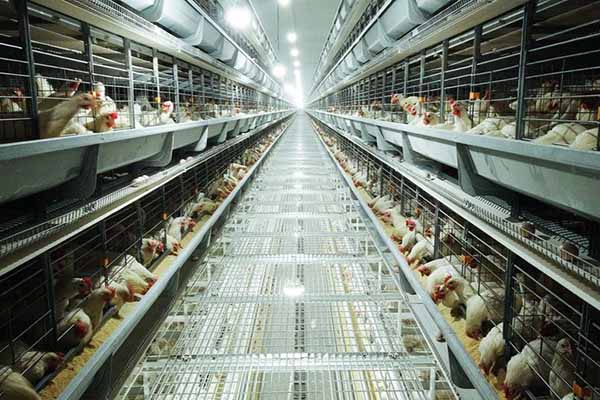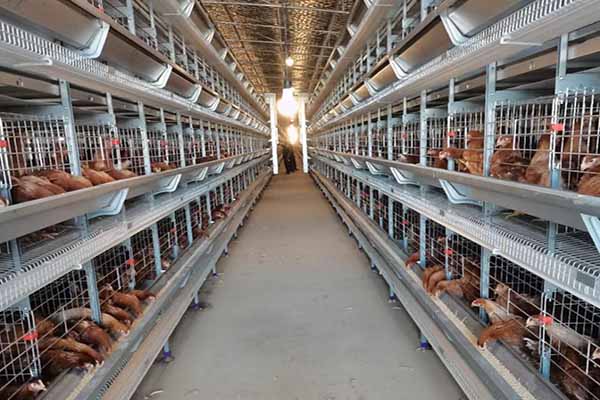How to Start a Country Chicken Farm: A Step-by-Step Guide
Time : 2025-04-14
Are you dreaming of starting your very own country chicken farm? Raising chickens can be a rewarding and profitable venture, and with the right approach, you can turn your passion into a successful business. In this comprehensive guide, we’ll walk you through the essential steps to start your country chicken farm. Let’s get cracking!
1. Research and Planning
Before you dive headfirst into the world of poultry farming, it’s crucial to do your homework. Here are some key areas to research:
- Market Demand: Understand the local market for country chicken products. Research local restaurants, grocery stores, and direct-to-consumer markets to gauge the demand for your products.
- Regulations: Familiarize yourself with local and federal regulations regarding chicken farming. This includes permits, zoning laws, and animal welfare standards.
- Business Plan: Create a detailed business plan that outlines your goals, budget, marketing strategy, and expected return on investment.
Remember, thorough planning is the foundation of a successful farm.
2. Selecting the Right Location
Your farm’s location can significantly impact its success. Consider the following factors when choosing a site:
- Accessibility: Ensure your farm is easily accessible to suppliers, customers, and workers.
- Water and Electricity: Reliable water and electricity sources are essential for your farm’s operations.
- Soil Quality: Good soil is crucial for healthy chicken growth. Conduct a soil test to determine the quality of your land.
- Privacy and Safety: Your chickens need a safe and private environment. Choose a location that minimizes the risk of predators and noise pollution.
Take the time to find the perfect spot for your country chicken farm; it will pay off in the long run.

3. Building Your Chicken Coop
A sturdy and well-designed coop is essential for the health and safety of your chickens. Here’s what you need to consider:
- Size: Ensure your coop is spacious enough for your chickens to move around comfortably. A general rule of thumb is about 2-3 square feet per chicken.
- Ventilation: Proper ventilation is crucial for maintaining a healthy environment. Include vents at both the top and bottom of the coop.
- Roosting: Provide roosts for your chickens to sleep on. These can be simple wooden beams or commercially available roosting systems.
- Nesting Boxes: Designate areas for your chickens to lay their eggs. Nesting boxes should be well-ventilated and easy to access for collecting eggs.
Remember to keep your coop clean and well-maintained to prevent disease and ensure your chickens’ well-being.
4. Chicken Selection
Choosing the right breed of chickens is essential for your farm’s success. Consider the following factors when selecting your chickens:
- Purpose: Determine whether you want laying hens, meat chickens, or dual-purpose birds (both for eggs and meat).
- Climate: Select breeds that are well-suited to your local climate and weather conditions.
- L layability: Choose breeds known for their high egg production or good growth rate, depending on your farm’s goals.
Research different chicken breeds and visit local hatcheries or breeders to find the perfect fit for your farm.
5. Feeding and Watering</h
<p >Proper nutrition and hydration are essential for the health and productivity of your chickens. Here’s what you need to know:
>Proper nutrition and hydration are essential for the health and productivity of your chickens. Here’s what you need to know:
- Feed: Purchase quality chicken feed that meets your birds’ nutritional needs. Consult with a veterinarian or poultry nutritionist for specific recommendations.
- Water: Provide fresh, clean water at all times. Use a sturdy waterer that is easy to clean and resistant to predators.
- Supplements: Consider offering supplements like grit or oyster shells to aid in digestion and eggshell formation.
Monitor your chickens’ health and adjust their diet as needed to ensure they are thriving.
6. Health and Management
Keeping your chickens healthy and managing your farm effectively is key to success. Here are some tips:
- Regular Checks: Conduct daily health checks to identify any signs of illness or injury in your chickens.
- Sanitation: Keep your coop clean and free of waste. Regularly clean waterers and feeders to prevent disease.
- Preventive Measures: Implement biosecurity measures to minimize the risk of disease, such as limiting the introduction of new birds and regularly cleaning and disinfecting equipment.
Stay informed about the latest poultry health trends and attend workshops or seminars to improve your management skills.
7. Marketing and Sales
Marketing and sales are crucial for the success of your country chicken farm. Here are some strategies to help you reach your target market:
- Direct Sales: Offer direct sales to customers through your farm gate, farmers’ markets, or online platforms.
- Wholesale: Explore opportunities to sell to local restaurants, grocery stores, or other businesses.
- Brand Building: Create a strong brand for your farm and products. Use social media, websites, and other marketing channels to promote your business.
Be proactive in seeking out new customers and building relationships with existing ones to ensure a steady stream of sales.
8. Financial Planning
Managing your farm’s finances is essential for maintaining a sustainable business. Here are some tips for financial planning:
- Budgeting: Create a detailed budget that includes all of your expenses, such as feed, utilities, labor, and marketing.
- Record Keeping: Keep accurate records of your income and expenses. This will help you monitor your farm’s financial health and make informed decisions.
- Insurance: Consider purchasing insurance to protect your investment in case of unexpected events.
By carefully managing your finances, you can ensure the long-term success of your country chicken farm.
Conclusion
Starting a country chicken farm is an exci ting and challenging endeavor. With thorough planning, careful execution, and a commitment to the health and well-being of your chickens, you can create a thriving business. Good luck on your journey to becoming a successful poultry farmer!
ting and challenging endeavor. With thorough planning, careful execution, and a commitment to the health and well-being of your chickens, you can create a thriving business. Good luck on your journey to becoming a successful poultry farmer!
{2











